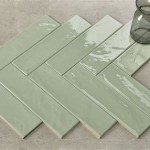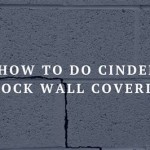Best Ways to Remove Tile From a Concrete Slab
Removing tile from a concrete slab is a common home improvement task, often undertaken when renovating a kitchen, bathroom, or other tiled area. The process can be challenging, as tile is typically bonded strongly to the concrete using thin-set mortar. Selecting the most effective removal method depends on various factors, including the type of tile, the adhesive used, the size of the area, and the desired condition of the underlying concrete slab. This article outlines several techniques for tile removal, detailing the tools and procedures involved for each method, and focusing on minimizing damage to the concrete substrate. The goal is to provide a comprehensive guide for successfully removing tile while preserving the integrity of the concrete slab.
Preparation and Safety Precautions
Before commencing any tile removal project, thorough preparation is essential. This involves gathering the necessary tools and protective gear. Essential tools typically include a hammer, chisel, scraper, pry bar, and potentially power tools such as a demolition hammer or angle grinder. A shop vacuum is crucial for managing dust and debris. Personal protective equipment (PPE) should include safety glasses, work gloves, a dust mask or respirator, and hearing protection. Tile removal generates significant dust, which can contain silica. Inhalation of silica dust can lead to serious respiratory illnesses, necessitating the use of a NIOSH-approved respirator. Proper ventilation of the work area is also crucial. Opening windows and doors, or using a fan to circulate air, can help minimize dust exposure.
In addition to personal safety, protecting the surrounding area is important. Covering nearby surfaces with drop cloths or plastic sheeting can prevent damage from flying debris. Securing the perimeter of the work area with barriers can also help contain dust and prevent accidents.
Prior to beginning the removal process, it's advisable to inspect the tile and grout to assess the bonding strength. This can provide insight into the most appropriate removal technique. Attempting to remove a small section of tile in an inconspicuous area can serve as a test to gauge the effort required and the potential for damage to the concrete.
Manual Tile Removal Techniques
Manual tile removal techniques rely on hand tools to break the bond between the tile and the concrete. This method is typically slower and more labor-intensive than using power tools, but it offers greater control and reduces the risk of damaging the concrete slab. The primary tools employed in manual removal are a hammer, chisel, and scraper.
The chisel is positioned at the edge of a tile, and the hammer is used to strike the chisel, driving it between the tile and the concrete. Applying consistent, moderate force is crucial to avoid shattering the tile or damaging the concrete. Working along the grout lines can often be more effective than attempting to pry up the center of a tile. The angle of the chisel should be shallow to avoid digging into the concrete.
Once the chisel has created a gap, a scraper or pry bar can be used to further separate the tile from the concrete. Applying leverage carefully and gradually is important to avoid cracking the tile or damaging the concrete. If the tile is strongly bonded, it may be necessary to repeat the chiseling process at multiple points around the tile.
After the tile is removed, residual thin-set mortar will remain on the concrete surface. A scraper or chisel can be used to remove this mortar. Applying a thin layer of water to the mortar can soften it and make it easier to remove. Be cautious not to gouge or scratch the concrete surface during this process.
Manual removal is best suited for small areas or when preserving the concrete slab is a high priority. It is also a quieter option compared to using power tools, which may be preferable in certain settings.
Power Tool Tile Removal Techniques
Power tools can significantly expedite the tile removal process, particularly for large areas. However, using power tools requires careful operation to prevent damage to the concrete slab. The most common power tools used for tile removal are demolition hammers and angle grinders.
A demolition hammer, also known as a jackhammer, is a powerful tool that delivers rapid, percussive blows. When using a demolition hammer for tile removal, it's essential to choose a model with adjustable power settings. Starting with the lowest power setting and gradually increasing it as needed can help minimize the risk of damaging the concrete.
The demolition hammer should be equipped with a wide, flat chisel bit. The bit is positioned at the edge of a tile, and the hammer is activated. Applying gentle pressure and guiding the hammer along the grout lines is crucial. Avoid applying excessive force or allowing the hammer to dwell in one spot, as this can easily damage the concrete.
An angle grinder can be used in conjunction with a demolition hammer or on its own. An angle grinder is equipped with a diamond grinding wheel, which is used to remove the grout surrounding the tiles. Removing the grout weakens the bond between the tile and the concrete, making it easier to remove the tile with a chisel and hammer or a demolition hammer.
When using an angle grinder, it's essential to wear appropriate PPE, including safety glasses, a dust mask or respirator, and hearing protection. Angle grinders generate a large amount of dust, and the high-speed rotating wheel can pose a safety hazard. A dust shroud attached to a shop vacuum is recommended to minimize dust exposure.
Power tool removal is faster than manual removal, but it requires greater skill and caution. It is important to practice on a small, inconspicuous area before tackling the entire project. Regular inspection of the concrete slab is crucial to identify and address any damage promptly.
Considerations for Subfloor Condition and Repair
After the tile is removed, it's important to inspect the concrete slab for any damage. Cracks, chips, and gouges are common occurrences during tile removal. Addressing this damage proactively is essential to ensure a smooth and stable surface for installing new flooring.
Small cracks and chips can be repaired using a concrete patching compound. The area should be cleaned thoroughly and any loose debris removed before applying the patching compound. Follow the manufacturer's instructions for mixing and applying the compound. Use a trowel to smooth the surface and ensure it is level with the surrounding concrete.
Larger cracks and deeper gouges may require more extensive repair. A concrete bonding agent can be applied to the damaged area to improve adhesion. A thicker concrete repair mortar can then be used to fill the cracks and gouges. For significant damage, it may be necessary to consult a professional concrete contractor.
In some cases, the concrete slab may be uneven or have variations in height. A self-leveling concrete compound can be used to create a smooth, level surface. This compound is poured over the entire slab and allowed to spread and level itself. This is a good option when installing new flooring that requires a perfectly level surface, such as large-format tiles or vinyl planks.
Before installing any new flooring, it's essential to clean the concrete slab thoroughly. Remove any remaining thin-set mortar, dust, and debris. A shop vacuum and a concrete cleaner can be used for this purpose. Allow the concrete to dry completely before proceeding with the new flooring installation.
Ultimately, the choice of tile removal method depends on the specific circumstances of the project. Careful planning, proper preparation, and the use of appropriate tools and techniques are essential for a successful outcome.

How To Remove Tile From A Concrete Floor

The Best Way To Remove Thinset From A Cement Foundation House Of Hepworths

Removing Tile And Thinset From Concrete Sawdust Girl

How To Remove Floor Tiles From Concrete Our Guide

How To Remove Tile From Concrete Floor Central Florida Dust Free Flooring Demo Removal Llc

How To Remove A Tile Floor Complete Step By Guide Apollo

How To Remove Tile Floor From Concrete

Tile Removal For Commercial Spaces Key Considerations

How To Remove Ceramic Tile And Thinset The Nifty Nester

How To Remove Tile Floor A Diy Guide
Related Posts








